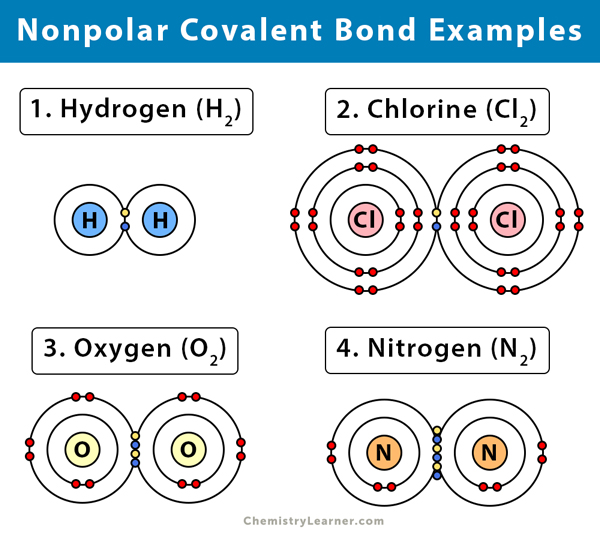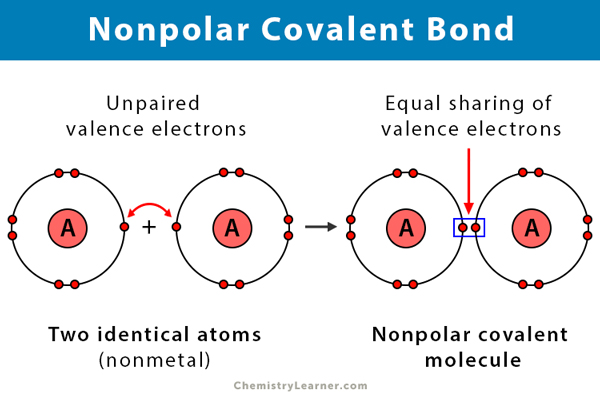Nonpolar Covalent Bond
What is a Nonpolar Covalent Bond?
A covalent bond is formed when two atoms share electrons between them. In a nonpolar covalent bond, electrons are equally shared. This phenomenon happens when there is no difference in the electronegativities of the two atoms. That is, to say, identical pairs of atoms form a nonpolar covalent bond [1-4].
Electronegativity is a measure of the tendency of an atom to attract a bonding pair of electrons. It is measured using a scale known as the Pauling scale and ranges from 0.7 to 4. The following table explains the different types of chemical bonds due to the electronegativity differences.
| Type of Chemical Bond | Electronegativity Difference |
|---|---|
Nonpolar covalent | 0 |
Slightly polar covalent | 0.1 to 0.4 |
Polar covalent | 0.5 to 2 |
Ionic | > 2 |
Nonpolar covalent bonds are essential in living things. For example, oxygen helps in the growth of the cells, and peptide bond joins together chains of amino acids, which are involved in the construction of the DNA.
Properties of Nonpolar Covalent Bond
Here are some facts about the nonpolar covalent bond.
- Takes place between two identical nonmetals
- Equal sharing of electrons between the two atoms
- Electronegativity difference between the atoms is 0
- Nonpolar compounds dissolve in a nonpolar solvent
- Physical properties: The compounds are generally liquid or gas at room temperature
Examples of Nonpolar Covalent Bonds
The substances that have nonpolar bonds and their molecular formulae are given below [2-4].
Hydrogen (H2)
Take the example of a hydrogen molecule. Because the nuclei of each hydrogen (H) atom contains protons, the electrons in the bond are attracted to the nuclei. However, because the two atoms involved in a single covalent bond are both H atoms, each nucleus attracts the electrons by the same amount. Thus, the electron pair is equally shared by the two atoms.

Examples of Nonpolar Covalent Molecules with Polar Covalent Bonds
Some nonpolar molecules are containing polar covalent bonds. In these molecules, the orientation of the various polar bonds is such that their polarities cancel each other. Below is a list of such molecules with their formulae.
| Compound Name | Molecular formula | Polar covalent bond |
|---|---|---|
|
Carbon dioxide |
CO2 |
C=O |
|
Sulfur trioxide |
SO3 |
S=O |
|
Silicon dioxide |
SiO2 |
Si=O |
|
Methane |
CH4 |
C-H |
|
Carbon tetrachloride |
CCl4 |
C-Cl |
|
Benzene |
C6H6 |
C-H |
Carbon dioxide (CO2)
Take the example of a carbon dioxide molecule. Carbon dioxide has a central carbon atom that has two oxygen atoms arranged at a 180-degree angle from each other, making it a linear molecule. Carbon forms a double bond (C=O) with each oxygen atom, and the electrons are not shared equally between the two atoms because of electronegativity difference. However, due to the symmetrical, linear arrangement of the molecule, the individual bond polarities cancel each other out. This orientation makes carbon dioxide a nonpolar molecule.
